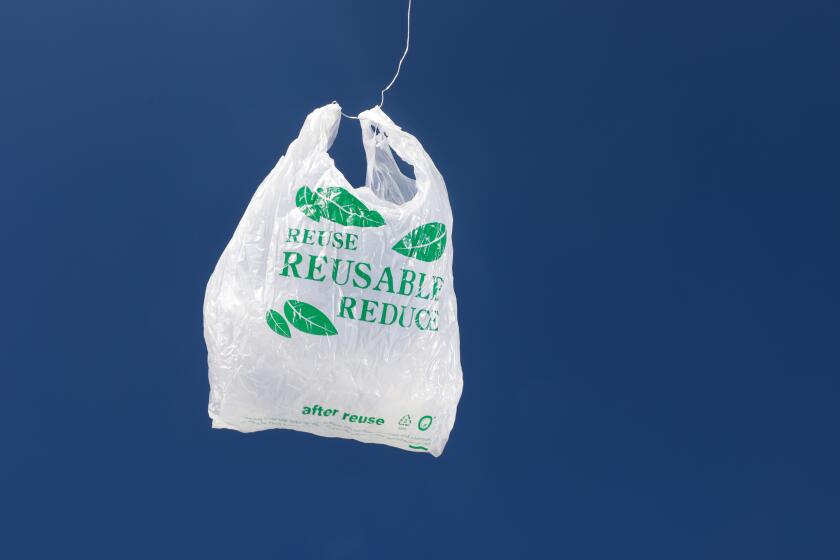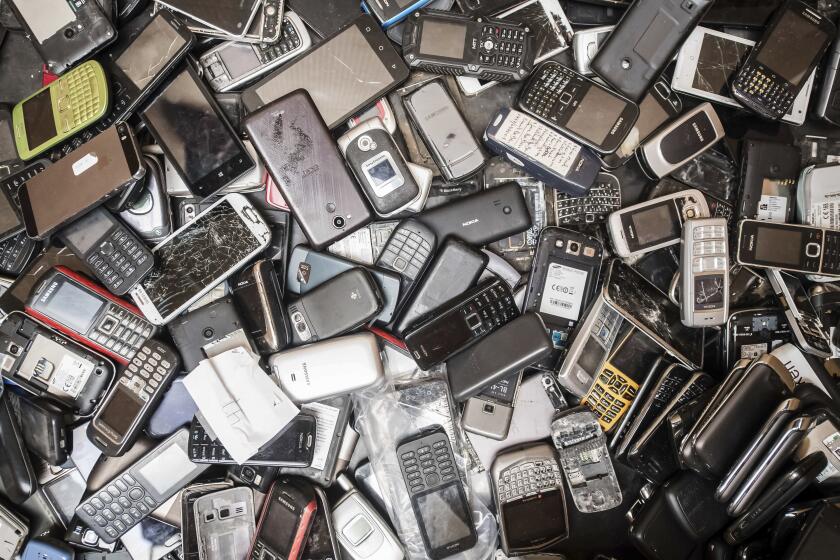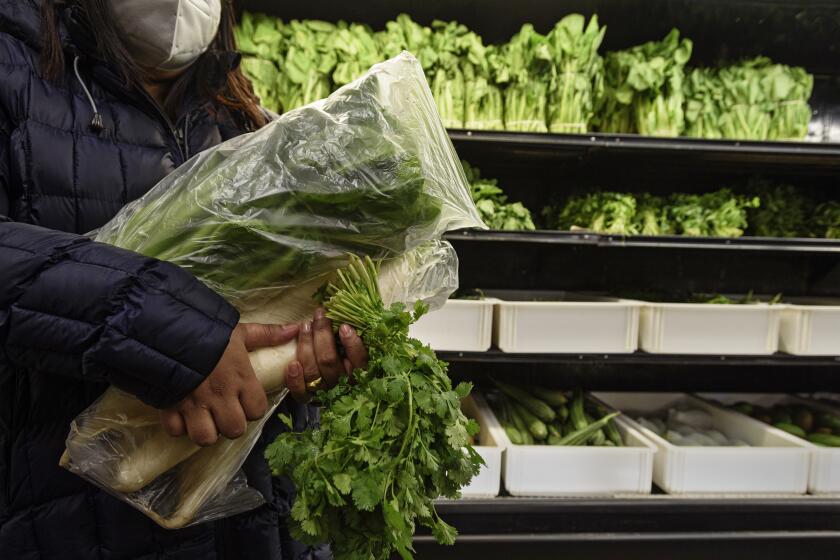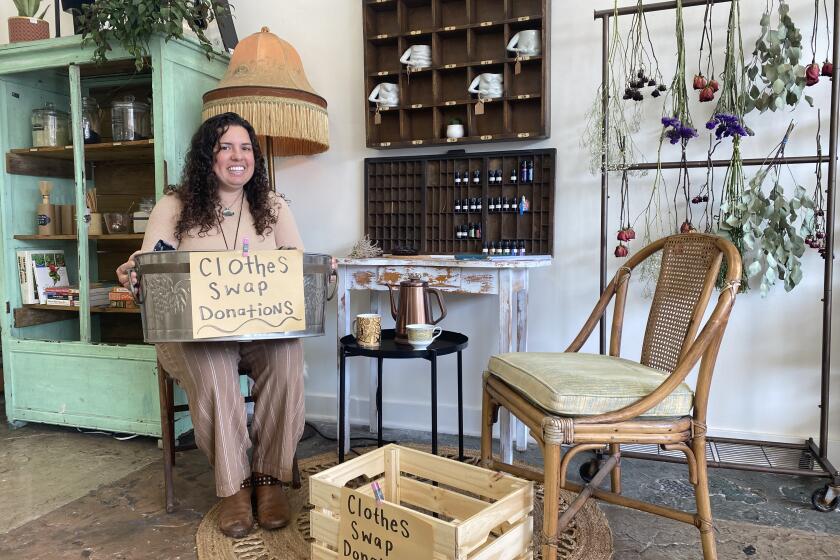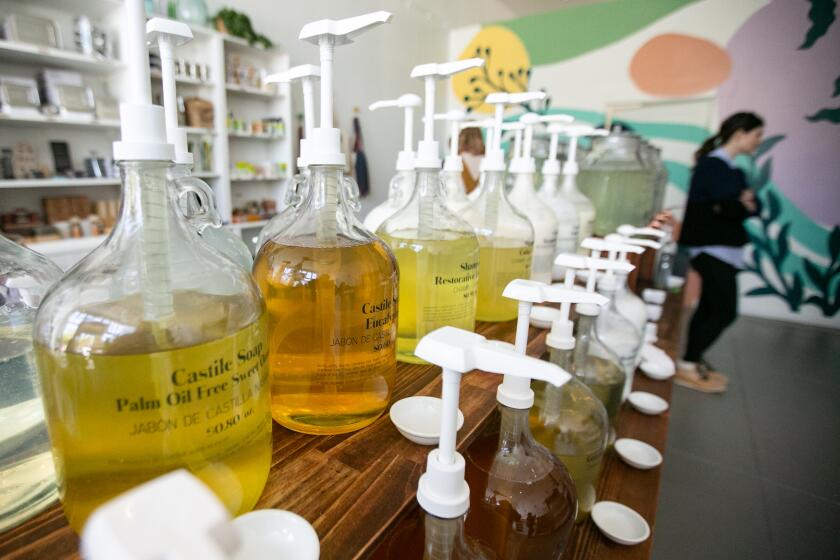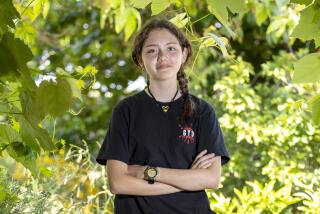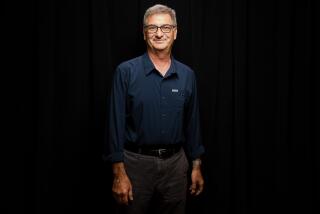Conveyer belts sort recyclables and non-recyclables at Potential Industries, a recycling plant in Wilmington, Calif. (Carolyn Cole / Los Angeles Times)
- Share via
Why do we recycle?
Californians recycle because “they’re attached to the environment they live in,” says Rachel Machi Wagoner, the director of the California Department of Resources Recycling and Recovery, known as CalRecycle. “Especially with the impact of the pandemic, we’re craving connection to people in our community, our state and our country.”
And the state can point to some progress:
- Since the start of the Covered Electronic Waste Recycling Program in 2003, Wagoner said 2.6 billion pounds of electronic waste has been diverted from landfills. The waste was dismantled by approved recyclers in California, and each material had a different end path, according to Lance Klug, information officer for CalRecycle. Materials such as aluminum, copper wires and plastic are refined and recycled. Circuit boards are often sold for reuse. Leaded glass and mercury lamps are recycled when possible or safely managed at facilities permitted to accept hazardous waste, Klug said.
- Local businesses such as the Computer Recycling Team Inc. in South El Monte have helped recycle e-waste for businesses and residents, as well as providing education about recycling.
- Other state-led programs have recycled 264 million tires and 8.5 million mattresses — preventing them from remaining in a landfill until the end of time.
- Last year, Gov. Gavin Newsom signed Senate Bill 54, which requires all packaging in the state to be recyclable or compostable and 65% of all single-use plastic packaging to be recycled by 2032. Many more legislative initiatives are on the way.
But Californians still have a way to go.
If the Golden State is going to lead the world toward a better, safer future, our political and business leaders — and the rest of us — will have to work harder to rewrite the California narrative. Here’s how we can push the state forward.
In 2021, Wagoner said, the state discarded 41.5 million tons of waste in landfills — a result, in part, of the pandemic, as we hunkered down in our homes and used single-use packaging in our online orders, to-go meals and in-store pickup bags. Compare that to 40 million tons of waste in 2020, 42.2 million tons in 2019 and 39.9 million tons in 2018.
The disposal of plastic bags is still a sticking point in our efforts to reduce waste. In 2014, California was the first state to adopt a ban on single-use plastic shopping bags, and most grocery stores started to use thicker bags that are supposed to be recyclable. But in 2021, it was reported, more plastic bags ended up in state landfills than in 2018.
California’s plastic bag ban aimed to reduce waste and increase recycling, but it hasn’t worked out as planned. What went wrong?
Wagoner said it’s not enough to have programs in place and a list of what can or can’t go in certain receptacles. It’s time, she said, for Californians to think about recycling as a lifestyle.
Know what goes in the bins
How can Angelenos reduce the amount of waste going to landfills? One step is by recycling whatever they can. Here’s a quick guide to what can be recycled in the City of L.A.
Even if you think you have it down, reacquaint yourself with your community’s rules for what goes in the trash, recycle and green waste receptacles. Depending where you live in L.A. County, you may be served by Athens Services, Waste Management, L.A. City Sanitation or another provider. And make sure to check CleanLA.com when you’re figuring out how and where to properly dispose of batteries, electronics and other hazardous waste.
Commercial and multifamily units in the city of Los Angeles are serviced by six different waste haulers, according to Jessica Aldridge, director of sustainability and zero waste programs for Athens Services — a waste collection and recycling company.
‘When it comes to plastic, it doesn’t need to be 100% clean and you don’t need to waste a bunch of water to clean this stuff out.’
— Jessica Aldridge
Athens and the city of L.A. accept plastics labeled 1, 2 and 5, and you can find the number within the chasing arrows logo. (The symbol alone — without a number— is not an indication that an item is recyclable.)
If the item isn’t labeled a 1, 2 or 5, Aldridge said, it won’t be recycled and belongs in the black bin.
Make sure you're recycling correctly
Understanding your city’s or local waste hauler’s rules for what goes in each waste receptacle is a simple way to ensure you’re doing your best to recycle correctly, said Steven Frasher, L.A. County’s Public Works Department spokesperson.
Each city and community within the county has different waste haulers, and some waste haulers have different facilities, with different rules. For example, Frasher said, palm fronds can’t be composted for residents in unincorporated areas in the county and should be tossed in the trash.
Another contested item is the pizza box, more specifically the greasy pizza box. “Even though the cardboard is theoretically recyclable material, it’s now contaminated,” he said.
Throw greasy pizza boxes in the trash! Unless you’re in the city of Los Angeles, throw it in the green bin. If you want to go the extra mile, cut the box in half — greasy side in the green bin and non-greasy side in the blue bin.
To understand what your local rules are visit CalRecycle’s website I Recycle Smart and get reacquainted with your area’s curbside program.
“When it comes to plastic, it doesn’t need to be 100% clean and you don’t need to waste a bunch of water to clean this stuff out,” Aldridge said. However, the plastic container does need to be empty. If a container contains food, throw the scraps in the green bin. If a bottle has liquid in it, pour it out. That liquid can leak onto other recyclables like paper.
The liquid can also change how the machinery in the recycling facility processes the plastic container.
The machine recycling facility initially moves recyclables through the system by their weight, Aldridge said, adding: “Bottles with liquid may land in the reject pile.”
There aren’t many truly bipartisan issues that could revolutionize the world for the better. Right to repair is an exception.
All of this should be useful information for aspirational recyclers — a person who is unsure if something is recyclable so they throw it in the recycling bin and hope for the best. The Consumer Brand Assn. says 40% of Americans follow this philosophy.
And know this, aspirational recyclers: The stuff that can’t be recycled ends up in a landfill.
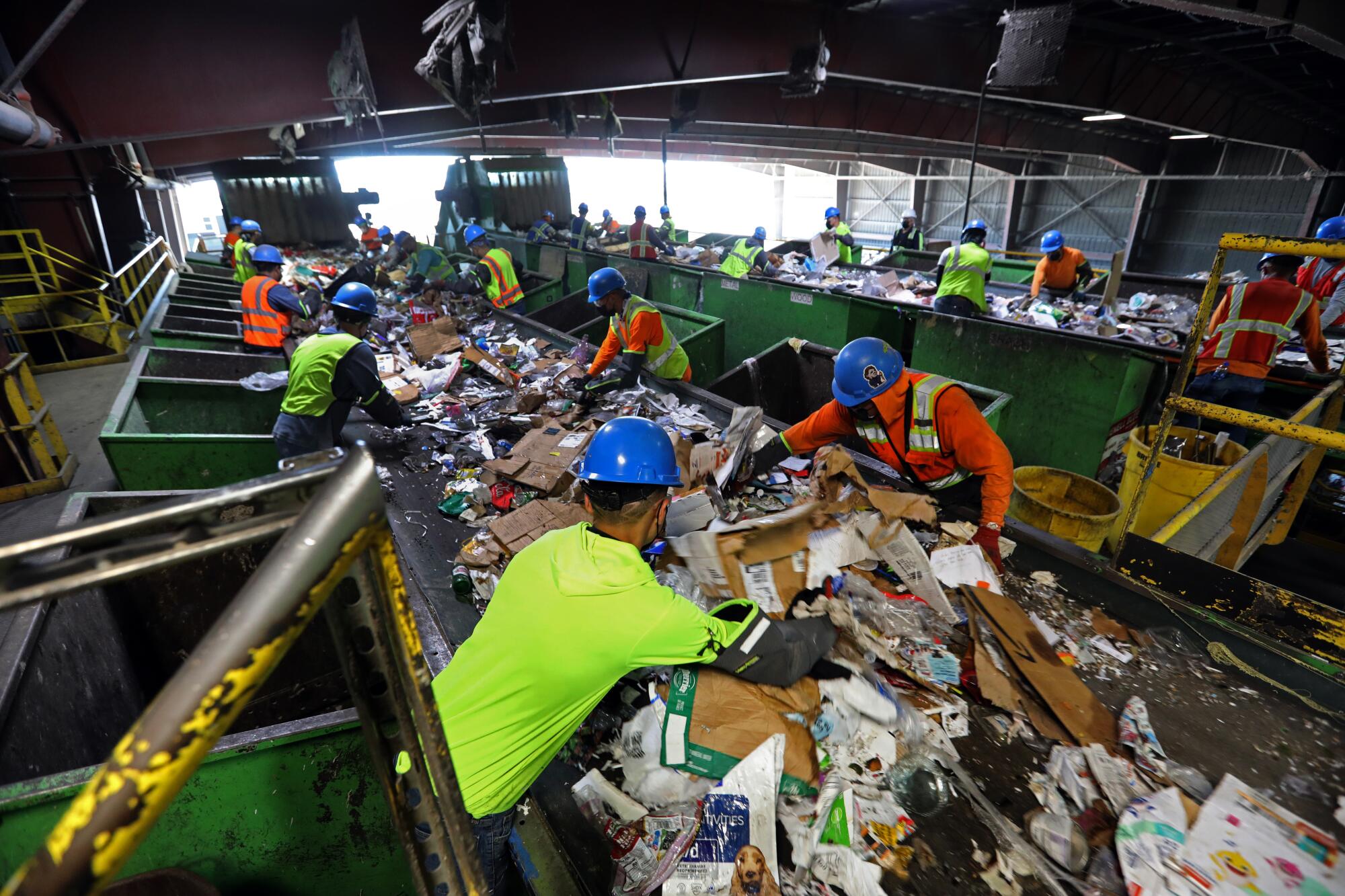
Two months after passing historic plastics legislation, state lawmakers send a half-dozen more bills to the governor’s desk to reduce waste.
Up your recycling game
Before you try to overhaul your current lifestyle, remember that change happens gradually. You’ll be more successful, Wagoner said, if you avoid guilt about what you consume and throw away.
And keep in mind that recycling isn’t just about what goes in your various bins. It can mean giving an item a second life. Give clothes a second life by attending a clothing swap in your area. Take a pile of clothes you’re no longer using, and pick up a few new (to you) items someone else no longer wants.
You can also donate clothes to a textile donation center such as the Suay Sew Shop, a Los Angeles-based sewing company. The shop accepts clothing (shirts, shorts and jackets) and textile (denim, cotton, wool, leather, silk and polyester) donations daily Then the staff repurposes those items into sustainably made pillow cases, tea towels, sweatshirts, fanny packs and other items.
Clothing swap events in Los Angeles and Orange counties are spaces for you to swap your used clothing for new (to you) items.
Do you have furniture that’s in good condition but no longer needed? It could bring joy to a family that is transitioning from homelessness or temporary living situations into permanent housing. Moving Families Forward provides free furniture and household items to Los Angeles families making the transition.
Used furniture is also accepted by organizations such as the International Institute of Los Angeles, which gives used items to refugees resettling in the area.
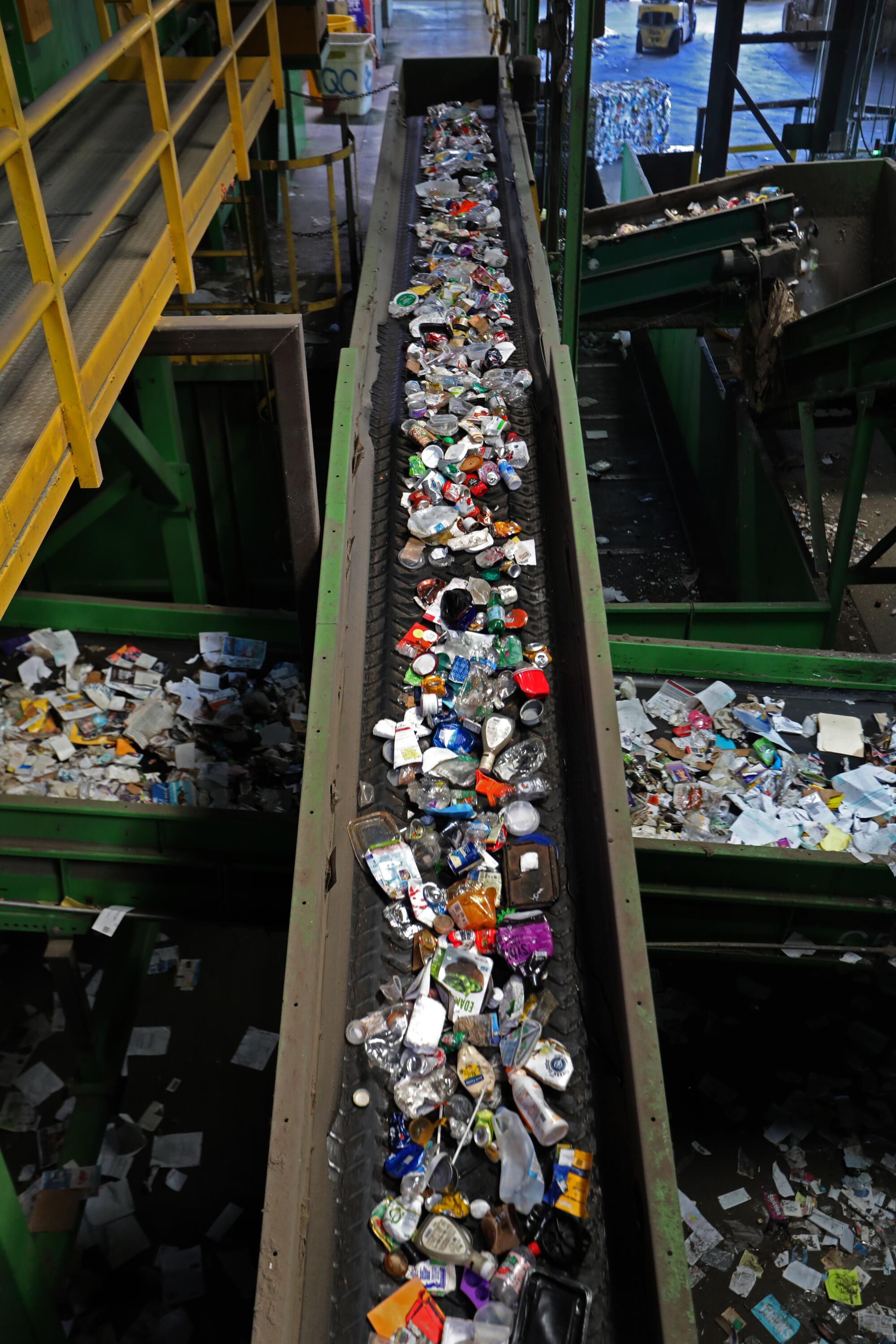
Books, meanwhile, can be donated to your local library branch or the branch’s Friends of the Library, a nonprofit that raises funds to support library services. (Give your local branch a call to ensure they’re accepting donations.)
You can also donate books at a neighborhood Little Free Library. Or support a local book shop, such as Dave’s Olde Book Shop in Redondo Beach, which has a donations bin at the back of the store.
To involve the whole family, make recycling a game. Wagoner said for Earth Day this year, she and her family embarked on a zero-waste challenge to reduce the family’s overall waste impact.
Her son realized his favorite chocolate milk came in a single-use container. Together the family decided he could continue having chocolate milk but drink it from a reusable bottle. Wagoner said she’s seen a 50% reduction in her trash because of the changes her family has made.
Wagoner advises that people ask themselves, “What happens to this product at the end of its use?” and “Where will it end up?”
Zero-waste refill stations let you reduce plastic waste and potentially save money because you pay only for what you take. Here’s where to find them.
The road ahead
Lifestyle changes you make now, Wagoner said, will complement larger efforts to get away from being a single-use economy to being a circular one. She added that many millennials and Gen Zers are rethinking their purchases based on the sustainability of the packaging.
Trivium Packaging, a global metal packaging company, partnered with Euromonitor International to publish an annual report to learn what consumers value and perceive when it comes to sustainable packaging. One big takeaway from the report? Fifty-nine percent of respondents look for information on the recyclability or sustainability of the packaging on products they buy. Another highlight: 82% of respondents would be willing to pay more for sustainable packaging.
About The Times Utility Journalism Team
This article is from The Times’ Utility Journalism Team. Our mission is to be essential to the lives of Southern Californians by publishing information that solves problems, answers questions and helps with decision making. We serve audiences in and around Los Angeles — including current Times subscribers and diverse communities that haven’t historically had their needs met by our coverage.
How can we be useful to you and your community? Email utility (at) latimes.com or one of our journalists: Jon Healey, Ada Tseng, Jessica Roy and Karen Garcia.
Ask a Reporter: Inside the project
What: Times reporters Rosanna Xia and Sammy Roth will discuss “Our Climate Change Challenge” during a live streaming conversation. City Editor Maria L. LaGanga moderates.
When: Sept. 19 at 6 p.m. Pacific.
Where: This free event will be live streaming. Sign up on Eventbrite for watch links and to share your questions and comments.

